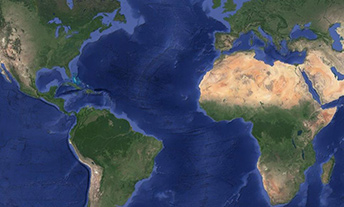
Elizabeth Córdoba
Systems Engineer
Imagine you’re a doctor, overseeing a patient who needs a multiple-organ transplant. You’re supervising a group of surgeons who each specialize in a body part: this one has the beating heart, another has the liver, a third the kidneys. Some of the surgeons are from other countries, accustomed to different languages and systems of measurement. Your job is to make sure the operation is choreographed so perfectly the patient not only survives, but lives a long and healthy life.
That is the task of Elizabeth Córdoba. As a payload systems engineer for the Mars 2020 mission, she oversees engineers who are integrating the 7 instruments for the mission rover. She ensures the rover’s instruments work together, and that can be like constructing an intricate jigsaw puzzle. One challenge was the MEDA instrument which collects data on weather, including wind.
“Wind interacts with the rover – for instance, as it passes over the RTG, it’ll heat up. We tried placing the wind sensor on the rover mast or on the side of the rover, but when you do that, it changes the geometry of the rover and affects the other instruments. The solution was to have it spring out from the rover, opening up to extend far enough away that there were no other negative side effects,” she says. “You really have to open your mind to be able to meet the needs of the scientists and engineers.”
“In the end, we as a team will have designed, built, and tested the most advanced suite of instruments ever to go to Mars. ”- Elizabeth Córdoba
As a child, Córdoba opened her mind to another way of thinking – she became enchanted with Spanish language and culture. She minored in Spanish while in college and studied abroad in Spain and Mexico for a semester. She’s now married to an electrical systems engineer at JPL who is originally from Colombia, and that relationship has helped hone her Spanish skills. She recently gave a talk entirely in Spanish at the US Embassy in Madrid. “I was nervous, but it went well, and I was even featured on the local news. It helped that some fellow JPLers were in the front row and helped me with some of the trickier translations.”
Her attraction to space science also began in childhood, but in that case, fear held her back.
“I wanted to be an astronomer, but I was afraid of the dark and thought astronomers only worked at night, so I decided I couldn’t have that particular career,” she says.
Then when she was 9 years old, her father brought her to his office for “Take Our Daughters to Work Day.” His office was NASA’s Johnson Space Center in Houston, and she got to meet astronauts and see with their eyes through virtual reality simulations. “When you looked down you could see your hand wearing an astronaut glove, and you could move around the Space Shuttle.” This opened her up to a new possibility: aerospace engineering.
After studying at Georgia Tech and MIT, she joined JPL in 2007. One of her favorite aspects of being a systems engineer is that she stays involved at every level of the project. “It’s all about listening to what people need, prioritizing the needs, and then compromising when we have to,” she says. “In the end, we as a team will have designed, built, and tested the most advanced suite of instruments ever to go to Mars.”
Where are they from?
Planetary science is a global profession.

























